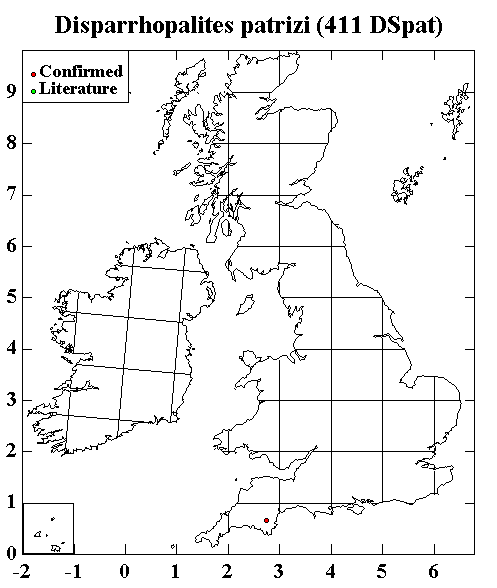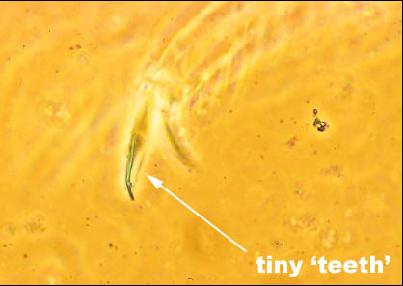|
Disparrhopalites patrizi in only known from a single locality. It was discovered in Rock House Caves, Devon in June 1971 by W. Maxwell. The species is white and reaches a length of 1.0 mm. Although generally considered to be a troglophile (i.e. 'cave lover'), Disparrhopalites patrizi has been recorded from sites away from caves in mainland Europe.
The fourth antennal segment (ant4) is divided into 12 subsegments (Fig. 1). Both edges of the mucro are serrated (Figs. 2, 3). The female sub-anal appendages (SAA) are not expanded at the tip (Fig. 4). The empodium of the foot is about four fifths the length of the claw (Fig. 5) which bears numerous tiny teeth on its inner edge (Fig. 6).
Disparrhopalites patrizi should certainly be looked for in caves in the south of England where it has probably been overlooked.
Back to main page
|
|













